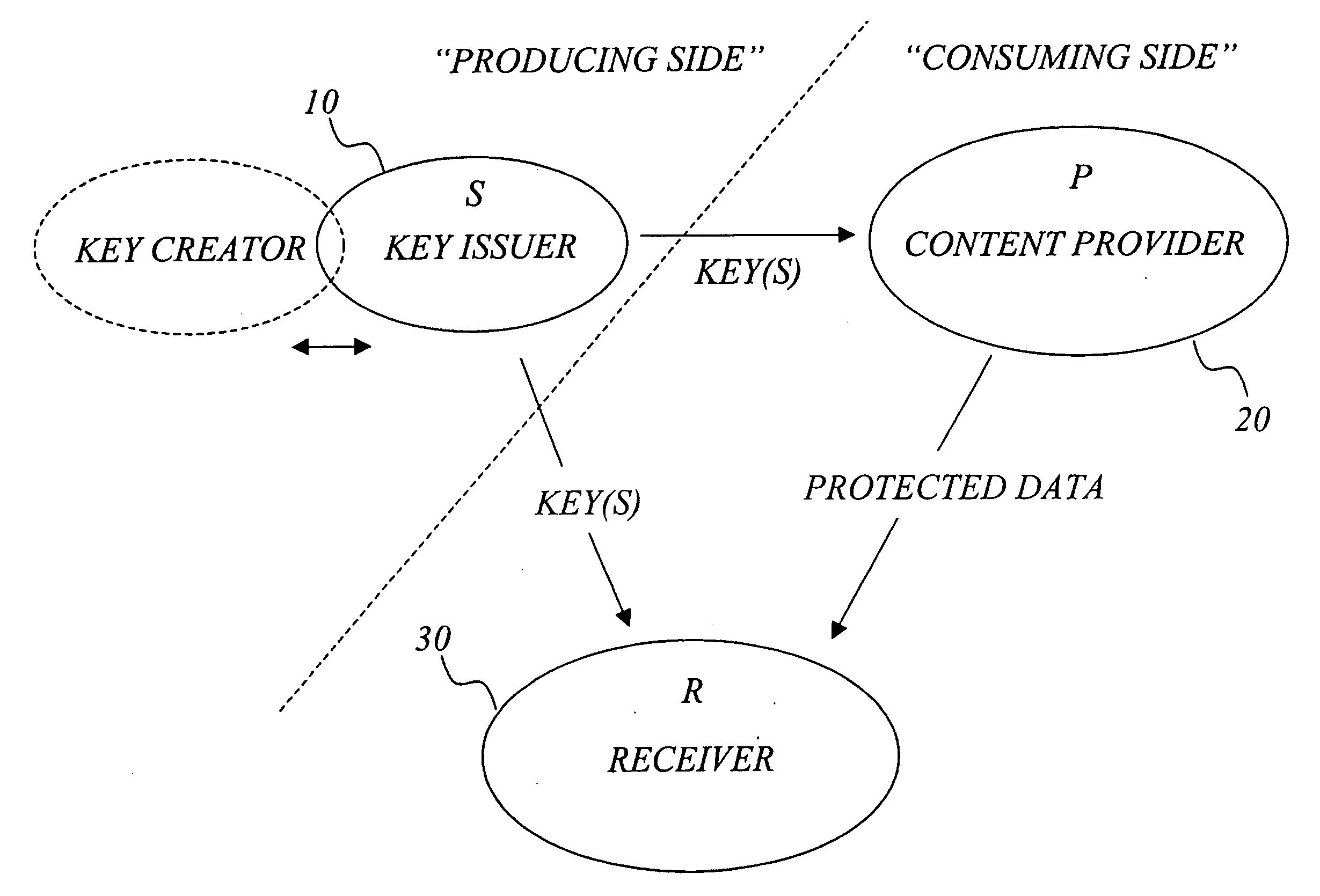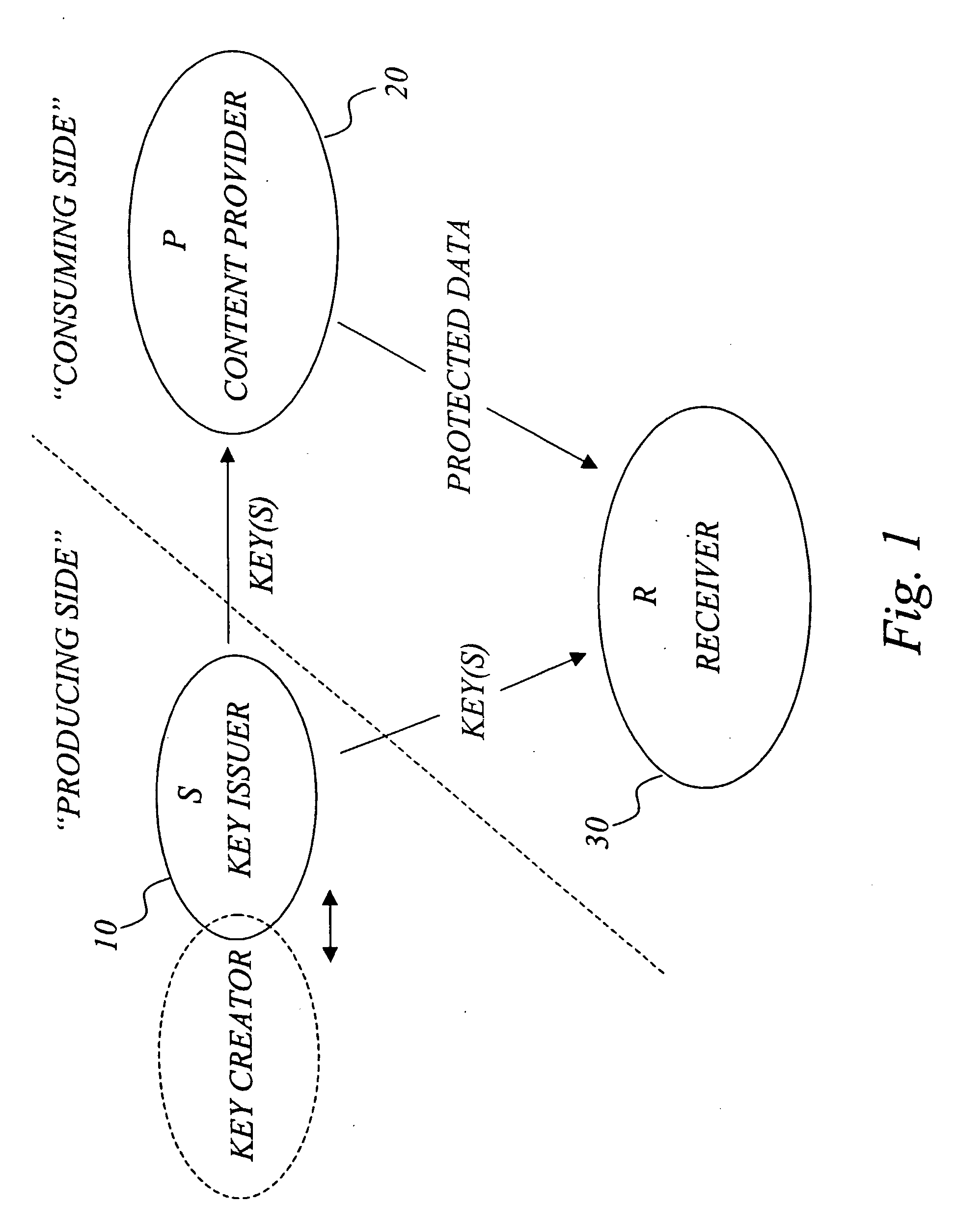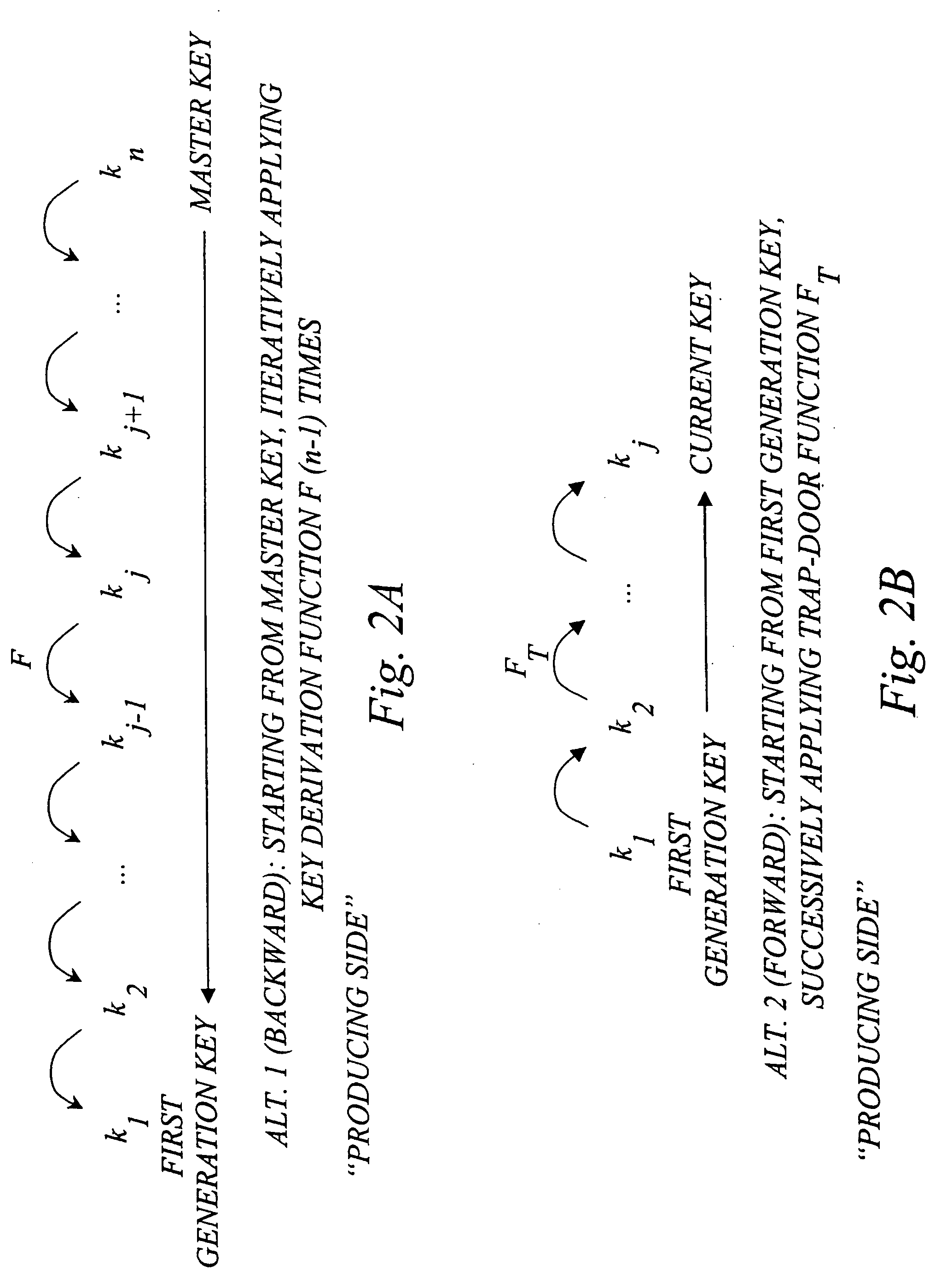Efficient management of cryptographic key generations
a technology of cryptographic keys and generation, applied in the field of management of cryptographic keys, can solve problems such as difficult or even undesirable, and the inability to secure a new session key by encrypting it under the old session key,
- Summary
- Abstract
- Description
- Claims
- Application Information
AI Technical Summary
Benefits of technology
Problems solved by technology
Method used
Image
Examples
Embodiment Construction
[0048] The embodiments described below are merely given as examples, and it should be understood that the present invention is not limited thereto. Further modifications, changes, and improvements that retain the basic underlying principles disclosed and claimed herein are within the scope of the invention.
[0049] Throughout the drawings, the same reference characters will be used for corresponding or similar elements.
[0050] With reference to FIG. 1, consider an information environment, here exemplified in the context of a communications system with at least one secret-key issuer S such as a key issuing server, at least one content or service provider P, and at least one potential receiver R. Using the terms from the background section, S is a “producer” and P and R are “consumers” of the keying material. Any S is assumed to have an a priori secure (e.g. confidential) channel with P and R. One objective is for provider(s) P to securely and efficiently convey data to receiver(s) R u...
PUM
 Login to View More
Login to View More Abstract
Description
Claims
Application Information
 Login to View More
Login to View More - R&D
- Intellectual Property
- Life Sciences
- Materials
- Tech Scout
- Unparalleled Data Quality
- Higher Quality Content
- 60% Fewer Hallucinations
Browse by: Latest US Patents, China's latest patents, Technical Efficacy Thesaurus, Application Domain, Technology Topic, Popular Technical Reports.
© 2025 PatSnap. All rights reserved.Legal|Privacy policy|Modern Slavery Act Transparency Statement|Sitemap|About US| Contact US: help@patsnap.com



